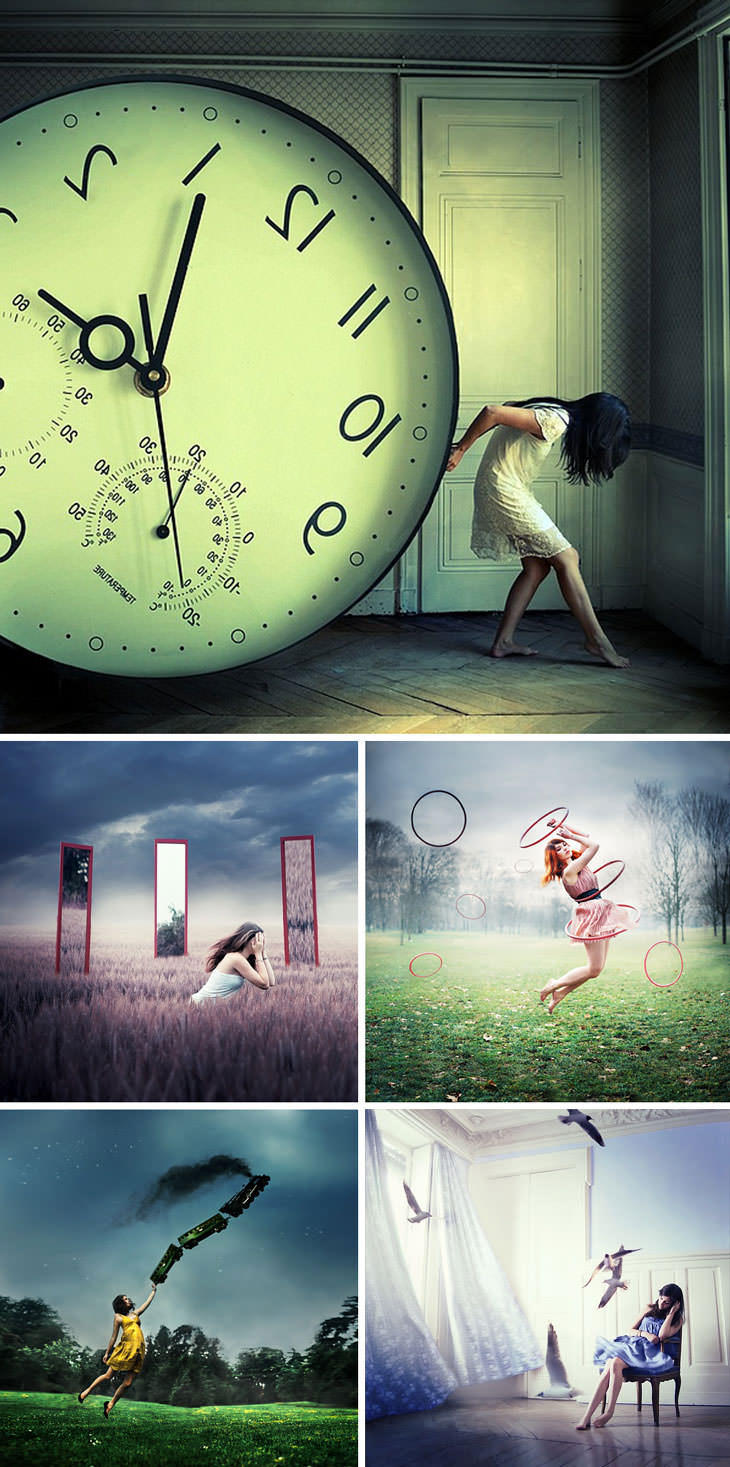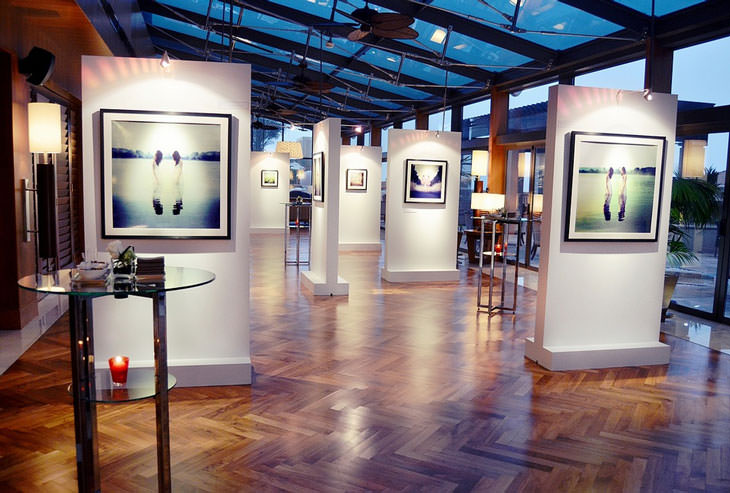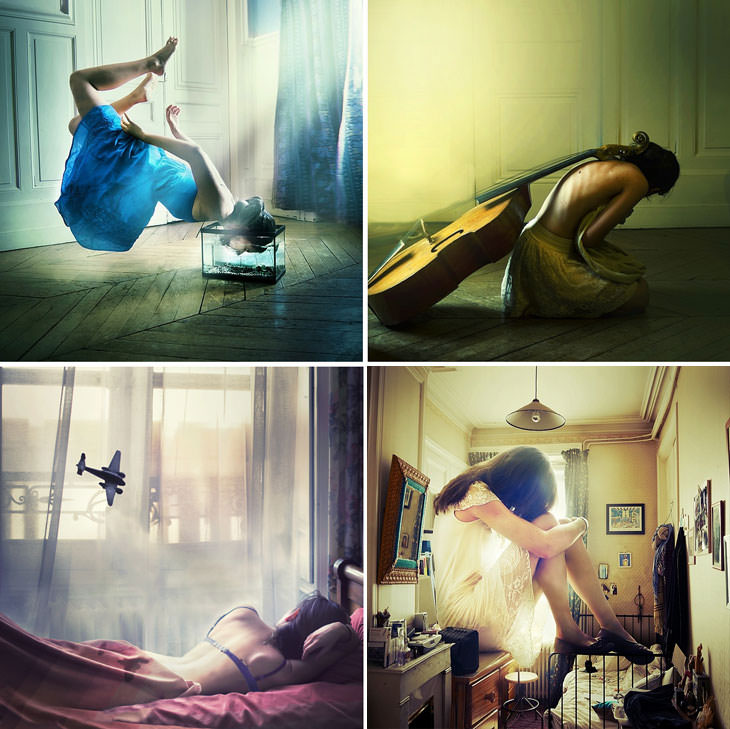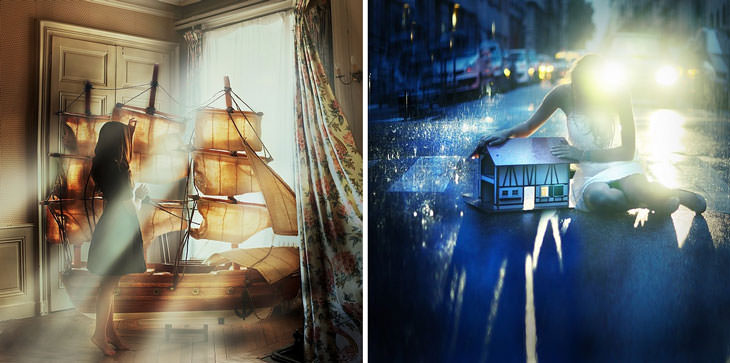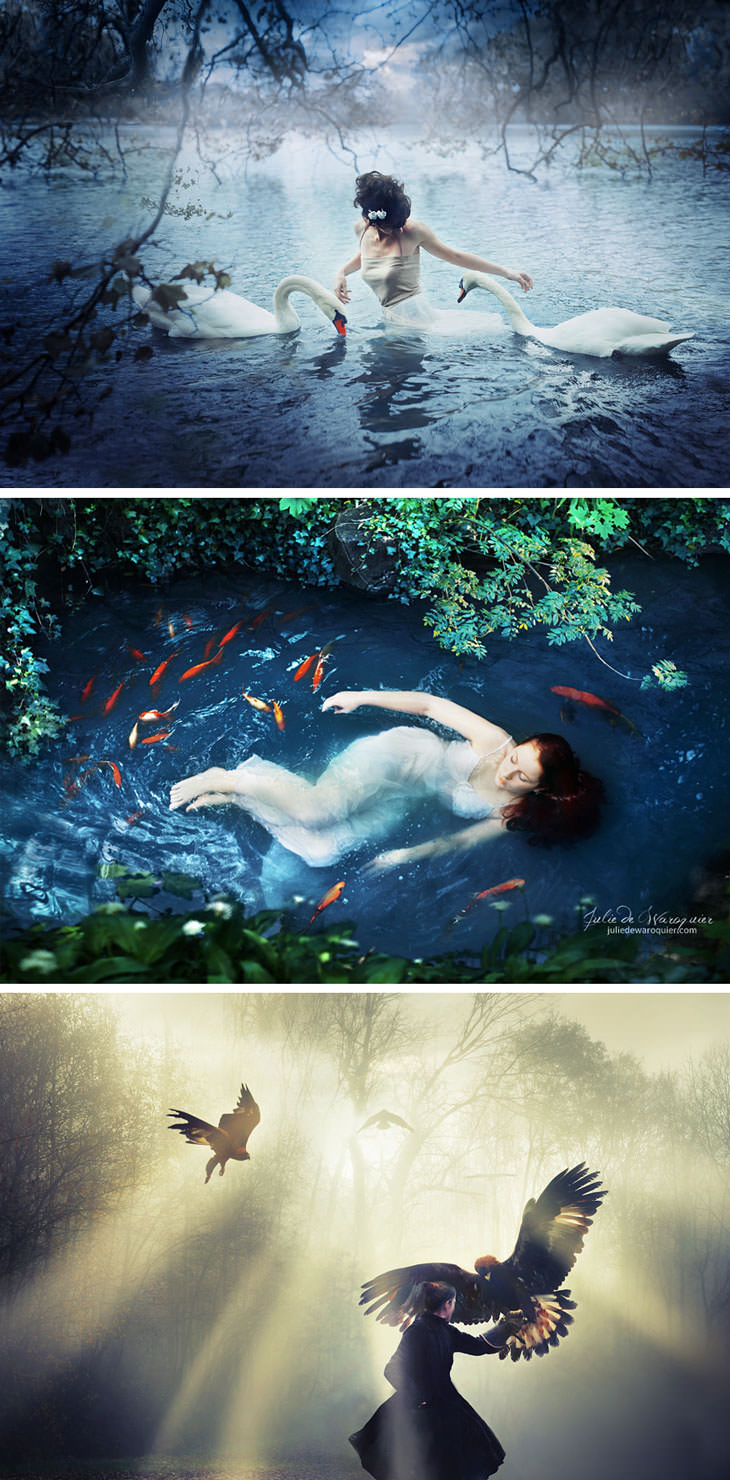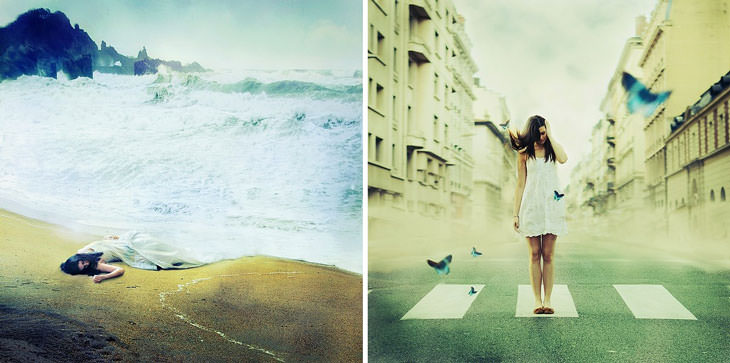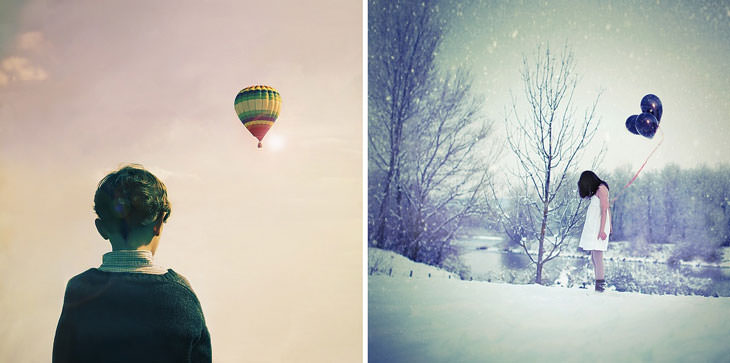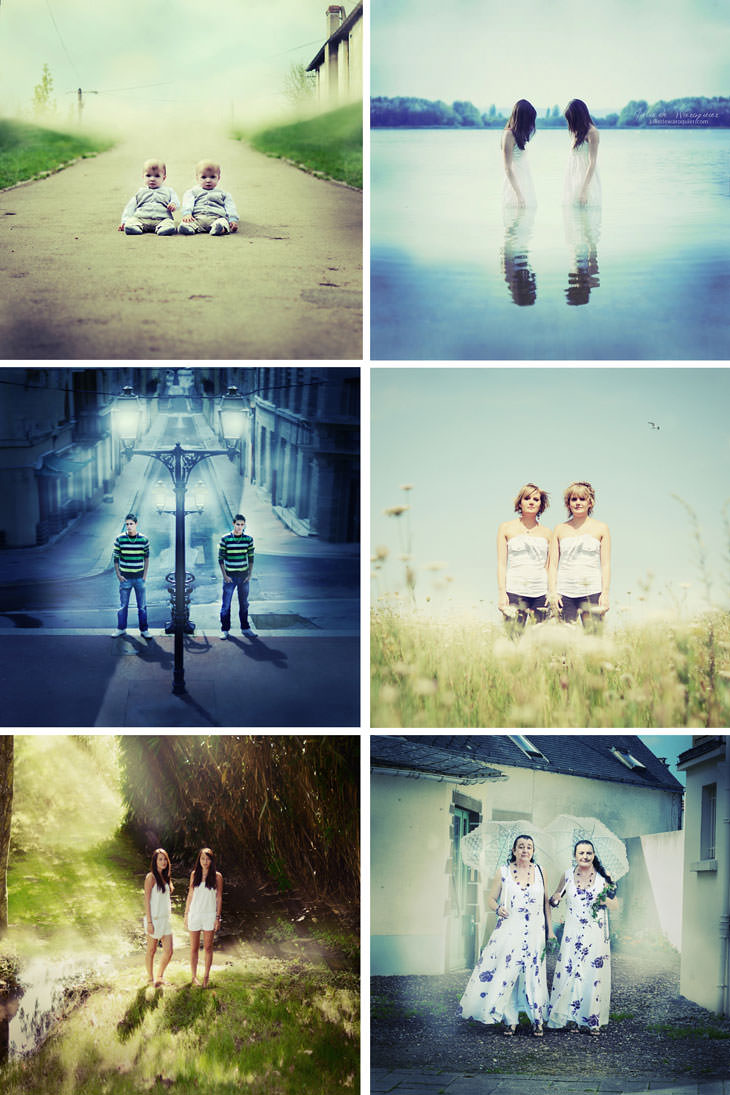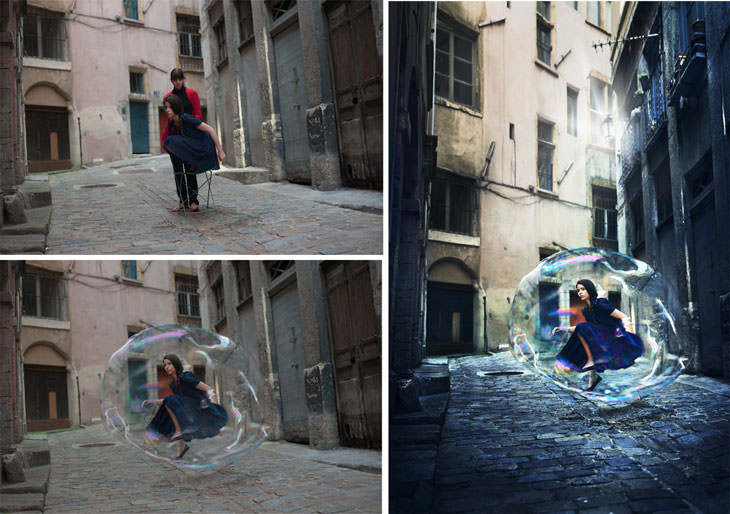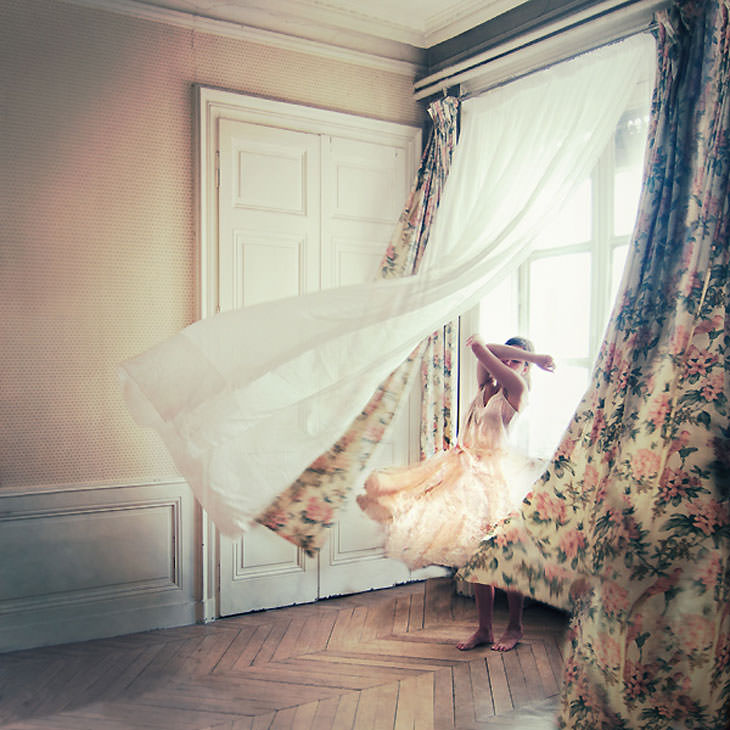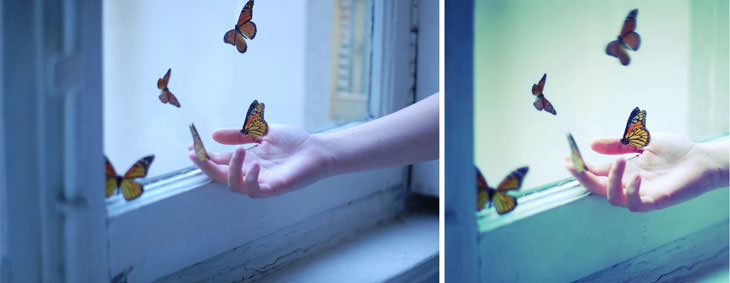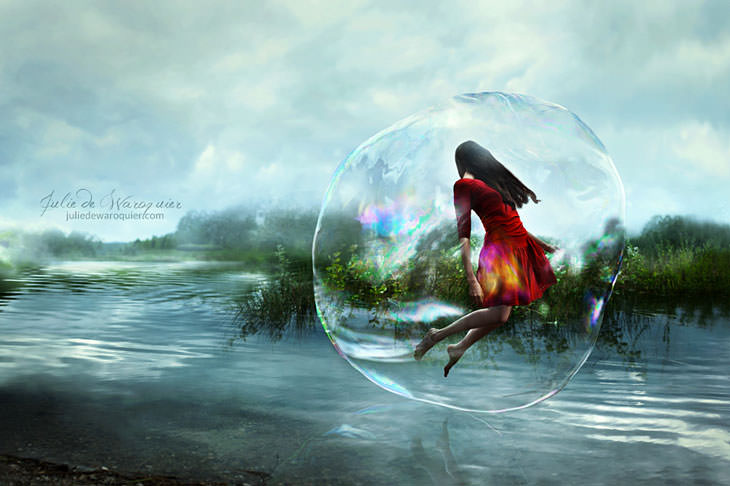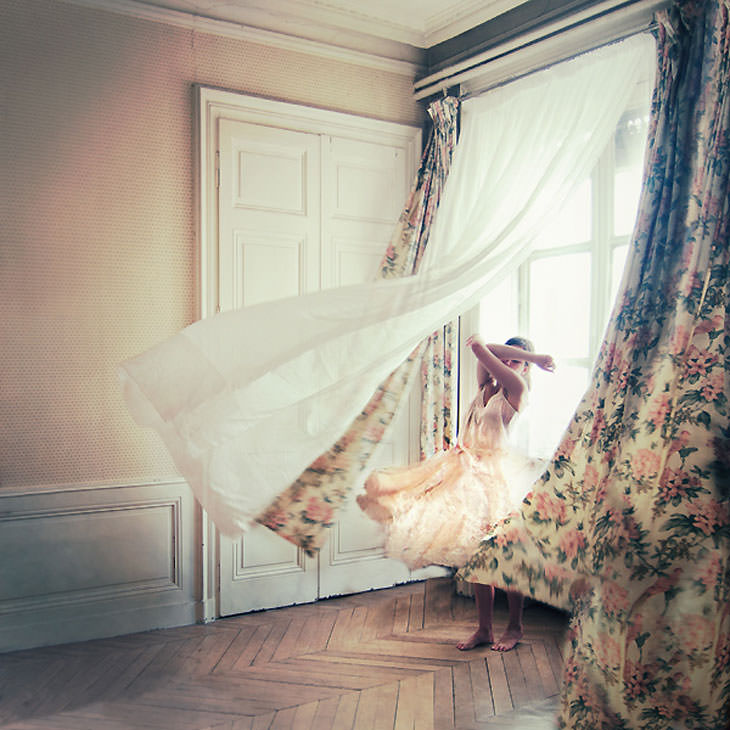
Julie de Waroquier Up Close and Personal with Phlearn
Since 2010, Julie de Waroquier has distinguished herself by winning several national and international awards, notably the Emerging Artist Award. Her photographs are exhibited worldwide, and were notably showcased at the Rencontres d’Arles. She is represented by several art galleries, and she participates in many French and international art fairs and events. Her work has been published worldwide, and at the end of 2012 she published her first book “Dreamalities”, which is edited by KnowWare editions.
How would you describe her photography? Julie says it best.
“With my pictures, I try to show the limits of post-modern pessimism, reminding us of the value and the Depth of the human being. That is why, through symbolism, I explore the invisible world which resides inside human minds and hearts. Fears, desires, and passions.
My approach is simply poetic; it raises questions about the world and the man who inhabits it: I’m looking for meaning where our society wants us to see nonsense or vacuum.”
Join us, as Julie talks about all of her different series of works, shows us how long the process of creating an image really is with her complex “Before and Afters”, as well as this she tells us of her struggles and successes. Julie is an amazing photographer and this is an interview you don’t want to miss!
How did you become interested in photography?
I got into photography quite randomly, when I received a small camera for my 18th birthday. I soon started to discover that I liked to create stories and beautiful pictures rather than taking holiday memories, and that’s how my passion grew!
What’s on your equipment list?
I own a Nikon d700 with two lenses, the basic 18-55 which I rarely use, and the 50mm 1.4. I edit my pictures with Photoshop cs5.
What are you currently working on?
I’m working on several commercial projects, with different clients: a CD cover for a famous French singer, an illustration for an Opera program, and an exhibition for Nikon.
I’m also working on a personal project, entitled “Solipsism”, which features several characters floating into giant bubbles. With this series, I question the general mysterious relationship that a soul can have with something external. The bubbles in the pictures represent the barrier of our consciousness, which both separates and links a soul to the rest of the world.
What is your proudest moment as a photographer?
I think that it’s my first exhibition, three years ago. It was a dream coming true and it was magical. I was invited to exhibit 40 pictures in a cultural center, it was amazing!
Your photos in your series “Ex-pressions” is an amazing body of work. What do these photos mean to you? (part of series seen above)
The idea came when I thought about what a creative process was. What does it mean to create something? How does it work, when a mental idea becomes a picture, and even a physical print? More generally, I thus wanted to work on “ex-pressions”, that is to say on the relationship between inner worlds and material worlds, when something invisible and mental become physical, through words or physical achievements. All of these pictures have a different story, they all tell their own tale. But they are linked because they all show the invisible realities that reside in the human heart. Passions, feelings, and thoughts. The characters are tormented or soothed by this ex-pression, this kind of exit from oneself which transfers to the inner reality of the outside world. What fascinates me is the relationship between the human subjectivity and the material world.
With that said, what photo in this series was the most difficult to create? Any set backs?
The most difficult picture to create was “Longing for an elsewhere” (bottom left). The photomontage was quite complex and I know that it’s still not perfectly done. But I tried my best!
Please tell us about your series entitled “Strangers”.
I wanted to create something else, to step out of my comfort zone. I like to regularly create the “Ex-pressions” and “Inner worlds” fairy tales, but I also like to work on very different and consistent series.
“Strangers” features humans and wild animals that meet each other. The main concept is that of Difference. I try to photograph what it is to experience the first contact with someone else, with someone truly different.
The concept is inspired by the philosophers Hobbes and Rousseau who both described the “state of nature”. According to Hobbes, the human being is profoundly mean and selfish, so that when he first meets someone, he has neither confidence nor sympathy. “The man is a wolf for the man”. On the contrary, Rousseau thinks that the man is innocent and genuine at the state of nature. He first experiences sympathy towards the other humans.
The animals and the humans in this series are thus between confidence and suspicion, between curiosity and fear. I don’t choose between Rousseau and Hobbes, I simply raise questions. I want to create stories that intertwine wildlife, nature, and human imagination, the better to question human nature. (“Strangers”, see below)
On average, how many shots does it take until you get “the shot”?
It really depends. Most of the time I know exactly what I want to create, and I take between 10 and 15 pictures. However if the composition is more complex, or if there are some unexpected difficulties, it can be a lot more!
How long is the process of creating an image?
If the composition is simple, the photoshoot lasts 15 minutes, and the editing one hour. If it’s a photomontage, the photoshoots lasts 30 to 45mn, and the editing up to 10 hours. It really depends on the complexity. The conceptualizing work is permanent. Of course before the photoshoot I think a lot about what I want to share, about which meaning I’m working on. But my ideas come from my deep unconscious; somehow they are always there with me. Sometimes I really understand my pictures after I have created them. When I see a picture finished, I realize that it carries some unexpected meanings. That is why conceptualizing is a continuous process for me.
How do you apply your knowledge of philosophy to your photography? Would you say that for you, they are both intertwined?
Philosophy helps me rationalize what I do. Creating is spontaneous for me; my ideas almost come by themselves into my head. I simply feel and know what I want to create. It’s not rational, and that is why philosophy helps me conceptualize this Inspiration. It helps me wonder why I have these ideas and what they mean, which concept they rely on.
However they don’t easily intertwine. Indeed, photography is all about imagination and freedom, whereas philosophy is all about rigor and logic. They are like two different languages, as if I was trying to express the same idea through words and pictures.
Julie de Waroquier’s inspiration for the series “Inner Worlds”?
It is the first series I created. At first it wasn’t even supposed to be a series, I took a picture and then another one and so on, and one day I was told that altogether they were a consistent Body of work. As a series, these pictures depict dreams, as if we were exploring the human mind. While the series “Ex-pressions” questions the relationship between our subjectivity and our real world, the series “Inner worlds” only looks inside our hearts and shows what is inside.
What image from the series (Inner Worlds) is your favourite? And what image was the most challenging?
My favourite is “If the dream flies away” (Below, left). It’s one of my very first pictures, and one of the only spontaneous shots of the series. There was this little boy, and the hot-air balloon… a beautiful moment.
The most challenging picture to create was “Frozen soul” (Below, right). It’s a self-portrait, but right before my own photo-shoot I was a model for a friend, wearing this summer dress in the snow. It was freezing, so much that when I started my self-portraits I could barely move my fingers. I had to run between each shot (as I didn’t own a remote and was using the self-timer) and tried not to give up the photo-shoot. But it was worth it!
What is the craziest thing you’ve ever done to get “the shot”?
I’ve done many crazy things for photography! Recently I put my head into a fish aquarium for the picture “Abysses”. First, it smelt absolutely terrible. It was also actually quite risky because the aquarium was narrow and my head could have remained blocked if I was not careful enough. I had my legs in the air so I could not control everything, but it was fun and I was very careful of course.
Can you tell us about your series “Chimeras”?
It’s my most exciting project. I photographed several real twins from various French cities and villages (more than 40 duos overall). I have always been fascinated by twins, and not only because I have a twin brother; they are like a living miracle to me. There are so many TV shows about twins, because they represent something amazing and surprising. In our society, we want to rationalize and explain everything. I often say that twins are like pink dolphins (which do exist!), they are real and yet they still amaze us, in our world that wants to rationalize everything. I wanted to catch this magical sparkle and to express it in a series.
Can you tell us about your experience of travelling, meeting, and photographing the twins.
I spent a whole summer travelling to meet them. After I created the first picture and started to talk about my project, I was invited to exhibit the series at the end of the summer, that is to say that I had two months to create the series. That is why I had to work fast.
I communicated through Facebook and twitter to find my models. Word of mouth also helped me a lot. Fortunately, I received many mails from interested twins. Then, when I had enough offers, I planned my travels; I wanted to photograph the twins near their living places, as the series was between documentary and fiction. I location scouted the places I was going to with Google Maps, and then I met my models in their cities or villages. I photographed them the day I met them, except for the twins I already knew of course. It was extremely challenging, as I could neither choose the Lights (it depended on my model’s schedules), nor the Styling (I only asked them to dress similarly), nor the places, etc. But it was really a wonderful experience overall.
Your work has been seen worldwide through magazines and gallery’s. What would you consider to be your “big break” in photography?
It was in November 2010, when I had my first contract (CD cover) and became a professional, when I had my two first exhibitions, as well as my first big publication in a national magazine. November 2010 was magical.
How does receiving so many awards for your work make you feel? Does it put unwanted pressures on you or is it what keeps you going?
Awards reassure me. I constantly doubt what I do, I’m always insecure and wondering if I should go on or stop my photography, wondering if what I create is worthy, etc. Awards help me believe in what I do, but of course they are just notes and certificates. This is not what motivates me in the first place. They’re just the cherry on the cookie!
Does a lot of editing go into your work? Could we see a before and after of one of your most edited shots?
It really, really depends. Sometimes I only edit the tones and Levels. It’s the case for “Fascination”. Sometimes I create complex photomontages, so much that there is no “before/after”, there are several befores and one after… it’s the case for all my “Solipsism” pictures (as seen below).
Do you ever sketch your ideas before you shoot them? Or do you just go by whats in your head?
I did a few times. It helps me for the composition; however I never keep them as they are ugly!
How has the internet helped with the exposure of your work?
The Internet gave me huge Exposure worldwide. Sharing my work online brought me my first contracts and it still brings me a lot of opportunities.
Please tell us about your book and where we can get a copy!!
It was one of my most exciting projects! I was contacted in mid-2012 by a publishing house (KnowWare editions), which offered me the opportunity to publish my own book. It was amazing, as I had the freedom to decide how I wanted it to be. I still can’t believe how lucky I am. I almost cry every time I go into a bookshop and see my book!
It is composed of 63 pictures in 3 chapters, all rhymed by several Texts (written in English and in French) that I wrote especially for the book. It is distributed in French book shops, and can of course be ordered online. All details are on my website here.
What is the favorite photo you’ve ever created?
It’s the picture “The violence behind” (See below), because it’s one of my most personal self-portraits. I wanted to express all the hidden and retained anger that we carry in our life.
How has photography changed your life?
It has completely changed my life. It’s a time-consuming passion; it’s half of my life. I still want to teach philosophy, but I want photography to be my other career. Photography also helped me be more self-confident. I was incredibly shy, I could barely talk to people I didn’t know. But photography made me travel a lot and made me meet a lot of people, so much so that now I have no difficulties in speaking in public or talking to strangers.
How often do you use yourself as a model in your work?
Less and less. I used to be my only model because I didn’t dare ask my friends or professional models to work with me. I was too afraid that they might not like the pictures! Now I work a lot more with models, and I show more Faces than before. But all the characters in my pictures are “universal”. They could be anybody; they are not real people, but characters.
What is your opinion on self-portraits? Would you consider this to be something every photographer and/or artist has to do at some point in their career?
It depends on the artistic approach. For me, it was not necessary, but it was helpful and possible (as I depict characters and not real people. My self-portraits are not real self-portraits, they don’t show me but a character with its own story). But if you want to do a documentary project for example, self-portraits might not always be appropriate. I guess however doing a self-portrait naturally happens to every photographer.
Who/What inspires you?
Everything inspires me, what I see, hear, smell, feel… but also memories, books and stories. They are all mixed up in my mind, and then my unconscious produces the concepts… I know that it sounds mysterious, but somehow it’s all the magic of art. Sometimes I see a prop and wonder how I can build a story around it, sometimes I try to express a specific feeling, and sometimes the picture simply pops up into my mind. I create series when I think that one picture isn’t enough to express everything that I want to say.
Within your photography do you use mostly natural light or artificial?
I only work with natural lighting, rather diffuse, to get the dreamy atmospheres that I like. But I recently won an amazing studio flash lamp, and I want to learn how to use it!
As well as personal projects you do commissioned work as well! You shoot portraits and weddings. How do you enjoy doing commercial work versus doing personal works?
It’s always difficult for me to create a picture for someone else, as my work is fundamentally personal. But it’s challenging and sometimes it leads me to new ways of creation. I have to renew my work all the time, and commercial work helps me explore new paths. For example with wedding photography, I remain connected to reportage. I think it is important to explore several sides of photography, to open our mind and Inspirations.
Is there one piece of equipment (besides your camera) that you just can’t live without?
The 50mm 1.4 is my current husband.
What would you consider some of the key elements to the development of your photography?
My main obstacle is that I doubt myself a lot. It often prevents me from creating. But photography has become too important in my life, I can’t stop anymore. So my photography development is made of doubts and trials.
Any advice to offer us fellow photographers?
Don’t be afraid of doubts! They help us grow as photographers.
Interviewed By: Angela Butler
If you’d like to keep up with Julia and her work be sure to visit her Website, Instagram, Facebook Fan page and/or Twitter feed.
